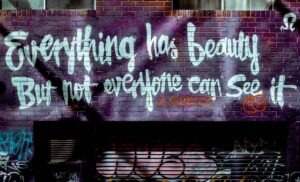In today’s saturated market, creating a powerful brand goes beyond just offering high-quality products or services. Consumers are increasingly drawn to brands that tell a compelling story—one that resonates with their own experiences and emotions. This is where visual storytelling becomes an invaluable tool. When implemented effectively, it can engage audiences on a deeper level, enhance brand recognition, and foster lasting loyalty. But how can a brand leverage visual storytelling to build a strong identity and establish a unique presence? Understanding the principles behind this strategy and exploring creative approaches is the key.
Using visual storytelling to create a powerful brand identity
Visual storytelling involves the use of images, graphics, videos, and other visual elements to convey a message. This strategy helps brands communicate values and narratives in a way that is easily digestible and emotionally engaging. Unlike text, visuals are processed faster by the brain and can leave a stronger impression. By weaving visual content into the overall branding strategy, companies can create a memorable brand identity that goes beyond just logos and slogans.
One of the primary benefits of visual storytelling is its ability to convey complex ideas quickly. For example, a well-designed infographic can illustrate a brand’s history, values, or milestones in a single glance. Similarly, a series of branded images can help convey a consistent theme that aligns with the brand’s core message. To achieve this, consistency in style, color schemes, and tone is essential. These elements should be thoughtfully crafted to reflect what the brand stands for and how it wishes to be perceived by its audience.

Understanding the elements of visual storytelling
Creating a compelling narrative through visuals involves understanding several key elements. These include imagery, color, typography, and composition. Each of these elements plays a distinct role in shaping how the story is perceived.
Imagery, for instance, can evoke different emotions depending on factors like lighting, focus, and context. Color schemes also influence perception and mood—bright colors can convey energy and positivity, while muted tones can suggest sophistication and calmness. Typography, though often overlooked, affects readability and can set the tone of the message. The layout or composition, on the other hand, determines how all these elements come together to guide the viewer’s eye and understanding.
Each of these components should be aligned with the brand’s overarching narrative. A cohesive use of these elements helps create a visual language that is instantly recognizable and relatable, making the brand more distinctive in the eyes of consumers.
Creating visual content that resonates
To effectively use visual storytelling, brands need to understand their audience and what type of content resonates with them. This involves identifying the audience’s preferences, pain points, and values. Knowing these aspects allows brands to craft visuals that reflect shared experiences or aspirations, thereby making the brand more relatable. For example, a brand targeting environmentally conscious consumers might use visuals that highlight sustainability and eco-friendly practices.
It’s also essential to incorporate a sense of authenticity. Audiences are quick to detect content that feels forced or insincere. Visuals should align with the brand’s real-world actions and commitments. This authenticity fosters trust and encourages audiences to engage more deeply with the brand’s story.
Examples of successful visual storytelling in branding
Several well-known brands have mastered the art of visual storytelling to build a strong identity. Companies like Apple and Nike use minimalist visuals to emphasize innovation and empowerment, while brands like Patagonia use photography and videography to highlight their commitment to environmental causes.
Through strategic use of images, video content, and even user-generated content, these brands manage to create a connection that goes beyond mere product offerings. They have successfully woven narratives that reflect their mission and resonate with their audiences on a personal level. By doing so, they have established a unique place in the market and garnered loyal customer bases.
Practical steps to incorporate visual storytelling into your branding
For brands looking to implement visual storytelling, there are a few practical steps to follow :
- Define the brand’s core message and values: understanding what the brand stands for is the first step in crafting a narrative that will resonate.
- Establish a visual style guide: consistency is key when it comes to visual storytelling. Develop a style guide that outlines color schemes, typography, and design elements.
- Create visual content that aligns with the brand’s story: use imagery, videos, and graphics that reflect the brand’s values and mission.
- Leverage multiple platforms: different platforms, such as social media, websites, and print materials, offer unique opportunities to tell different parts of the brand’s story.
These steps will help create a foundation for a visual storytelling strategy that strengthens the brand’s identity and presence in the market.
The impact of visual storytelling on consumer engagement
When done right, visual storytelling can significantly impact consumer engagement. Studies have shown that people are more likely to remember visual content compared to text alone. This means that brands using visual storytelling are more likely to stick in the minds of consumers.
Additionally, engaging visual content can increase social sharing and interactions, expanding the brand’s reach and visibility. Consumers are more likely to share content that they find interesting, relatable, or inspiring, which in turn can drive more traffic and awareness.
Building an emotional connection through visuals
Emotional connection is a vital component of brand loyalty. Visual storytelling allows brands to tap into this by creating content that resonates emotionally. Whether it’s an inspiring video, a thought-provoking graphic, or a series of behind-the-scenes images, these visuals can evoke emotions that words alone may struggle to express.
This emotional engagement can differentiate a brand from its competitors and build a loyal customer base that identifies with the brand’s story and values. Using visual storytelling effectively means creating not just a brand, but a community that shares a common identity and vision.
By embracing the power of visual storytelling, brands can achieve a stronger presence and deeper connection with their audience, ultimately establishing a more powerful and enduring brand identity.

